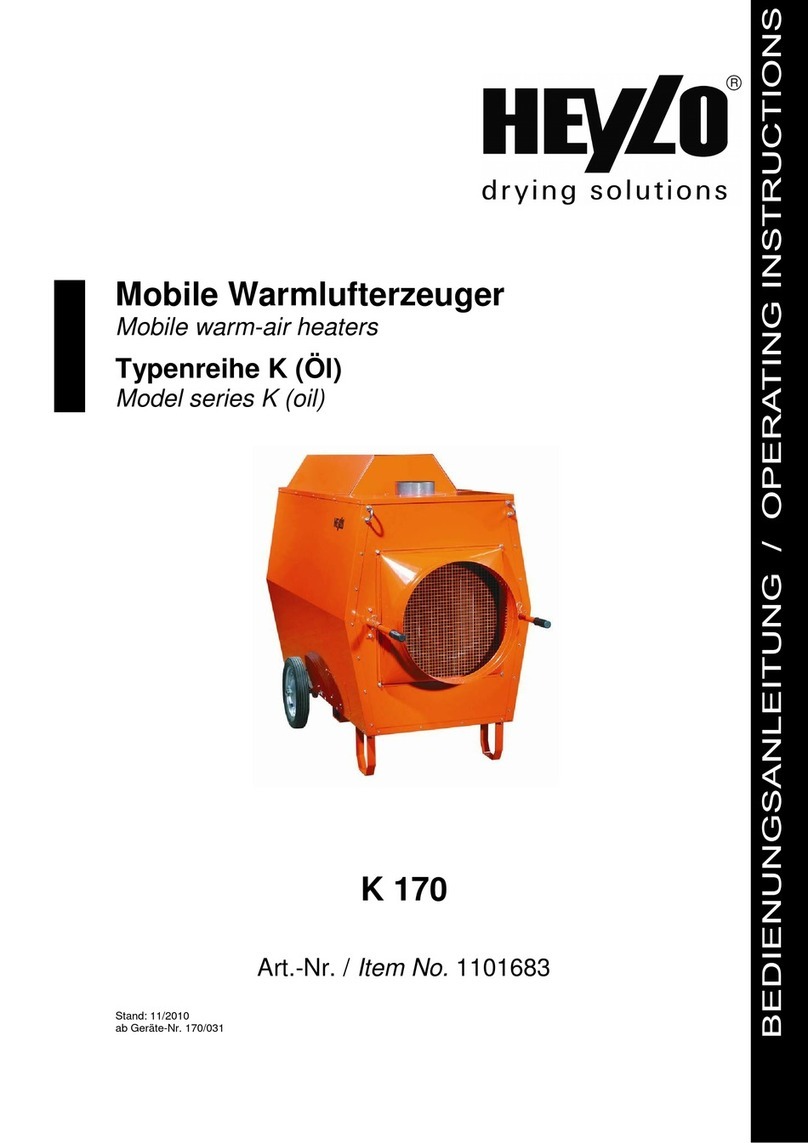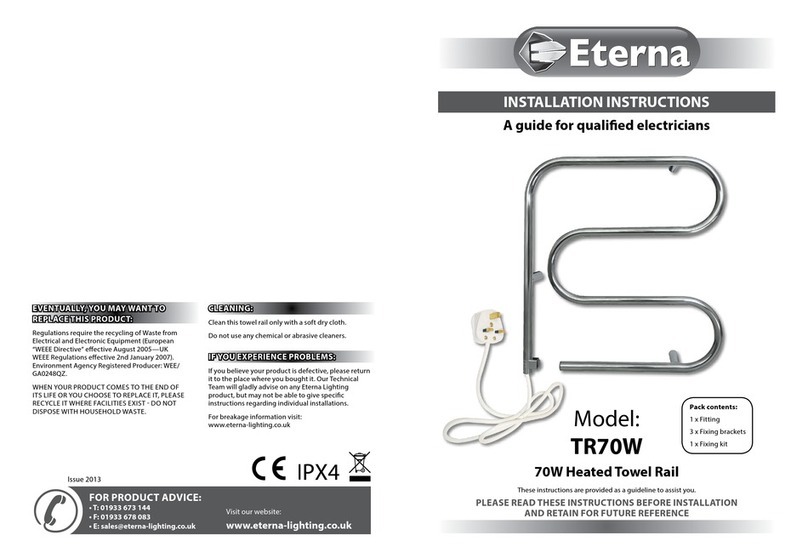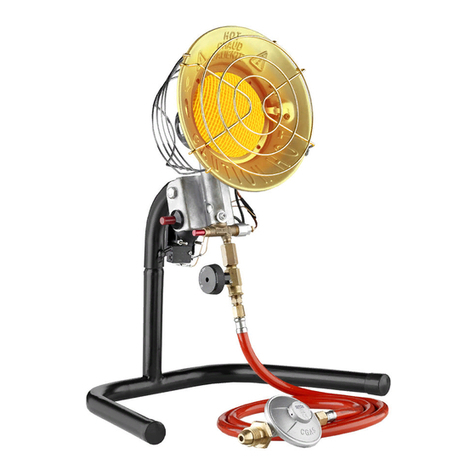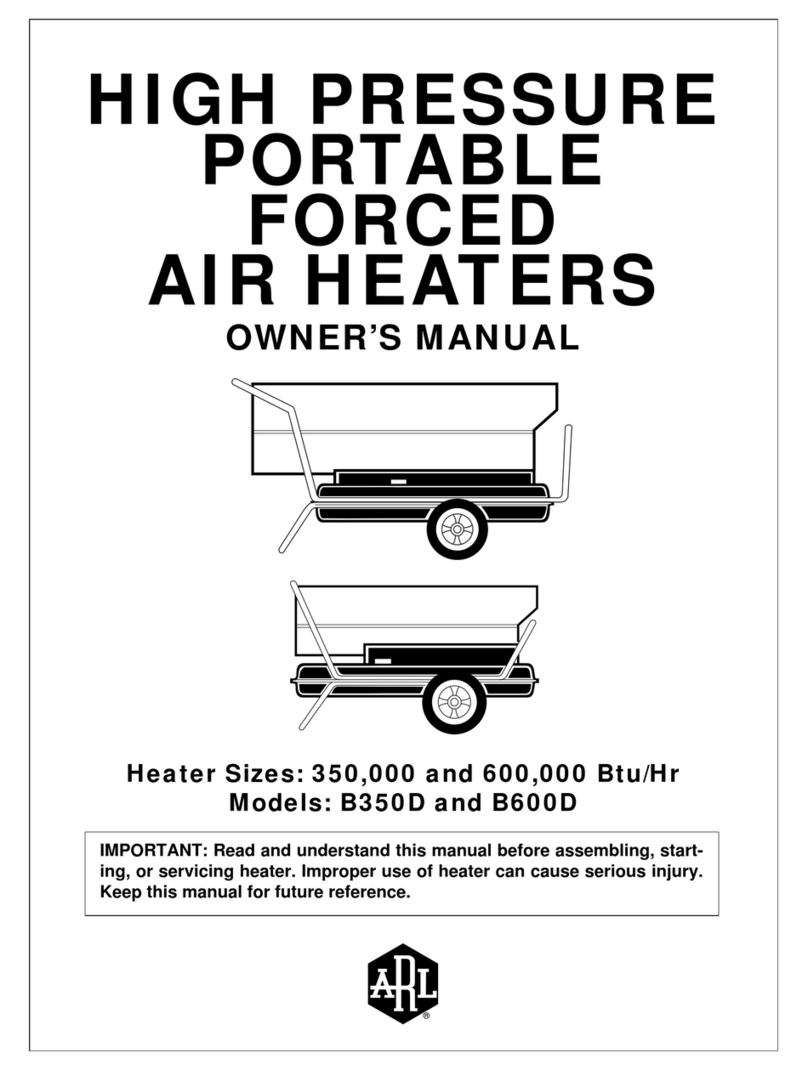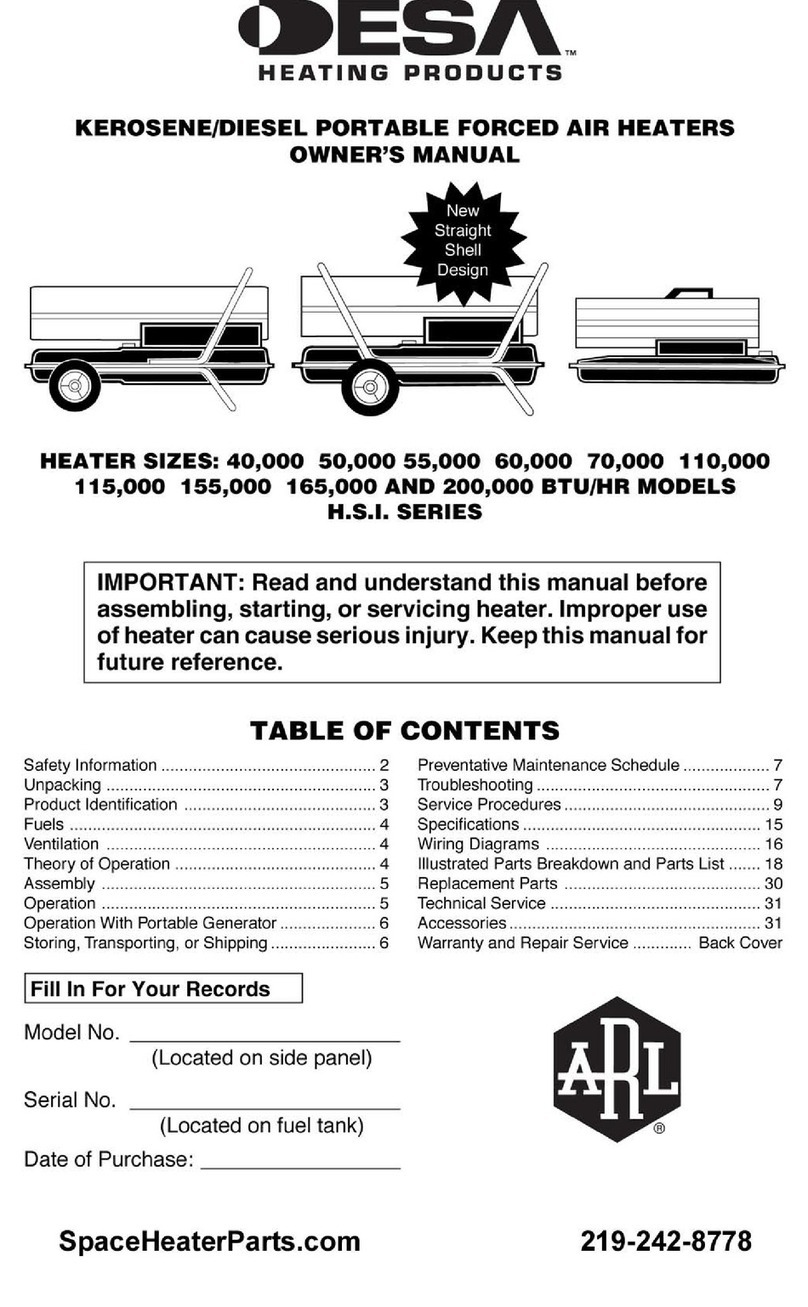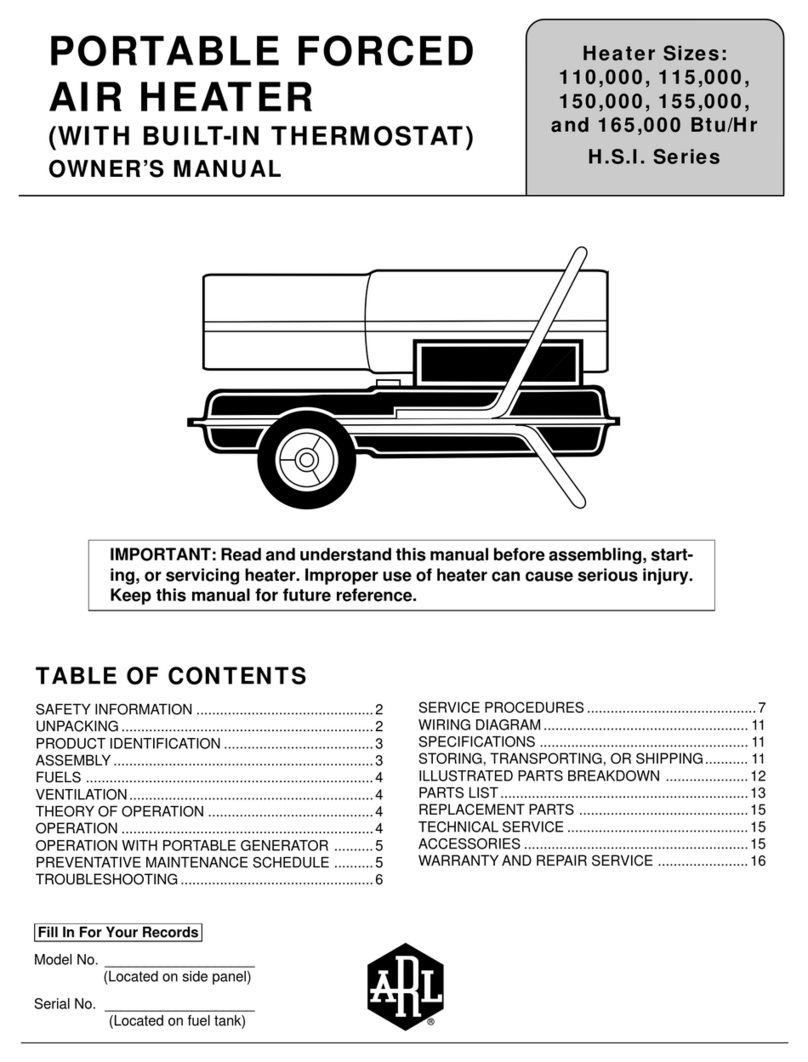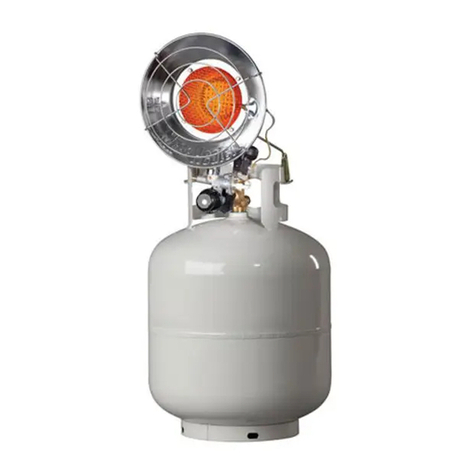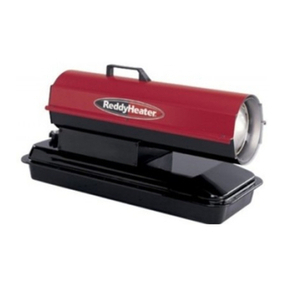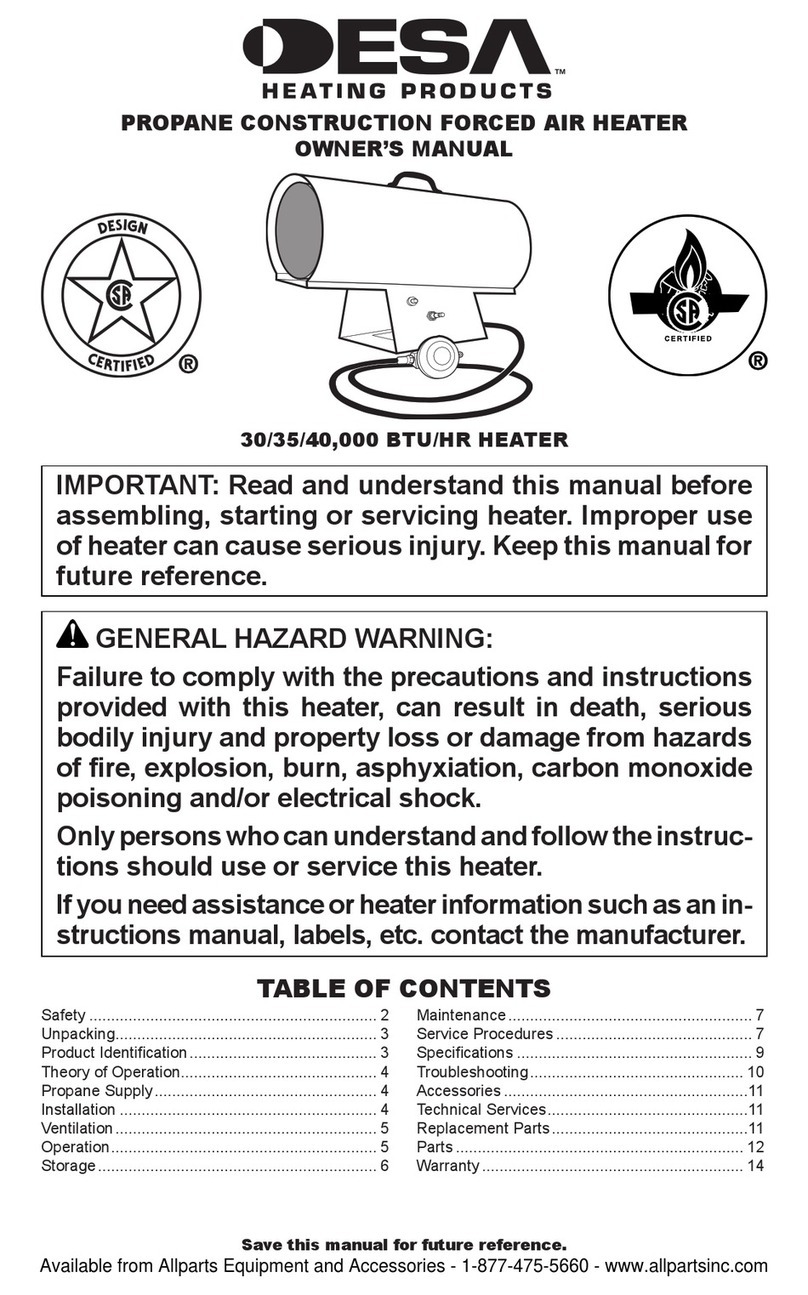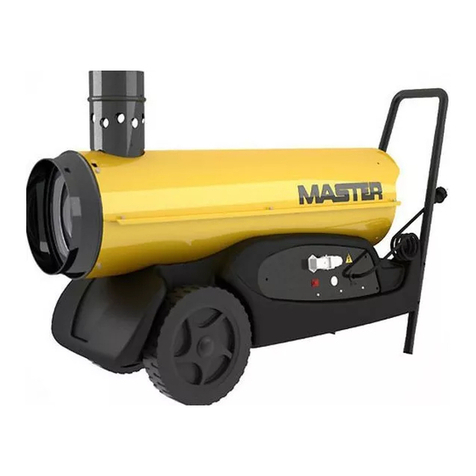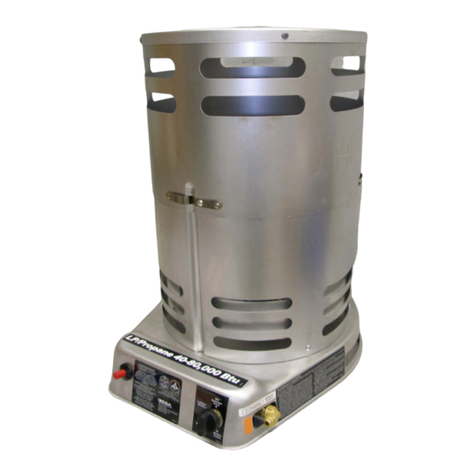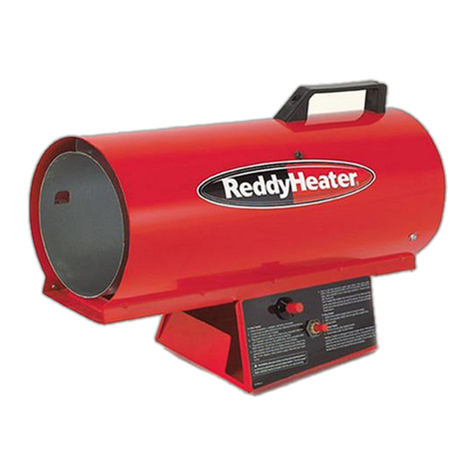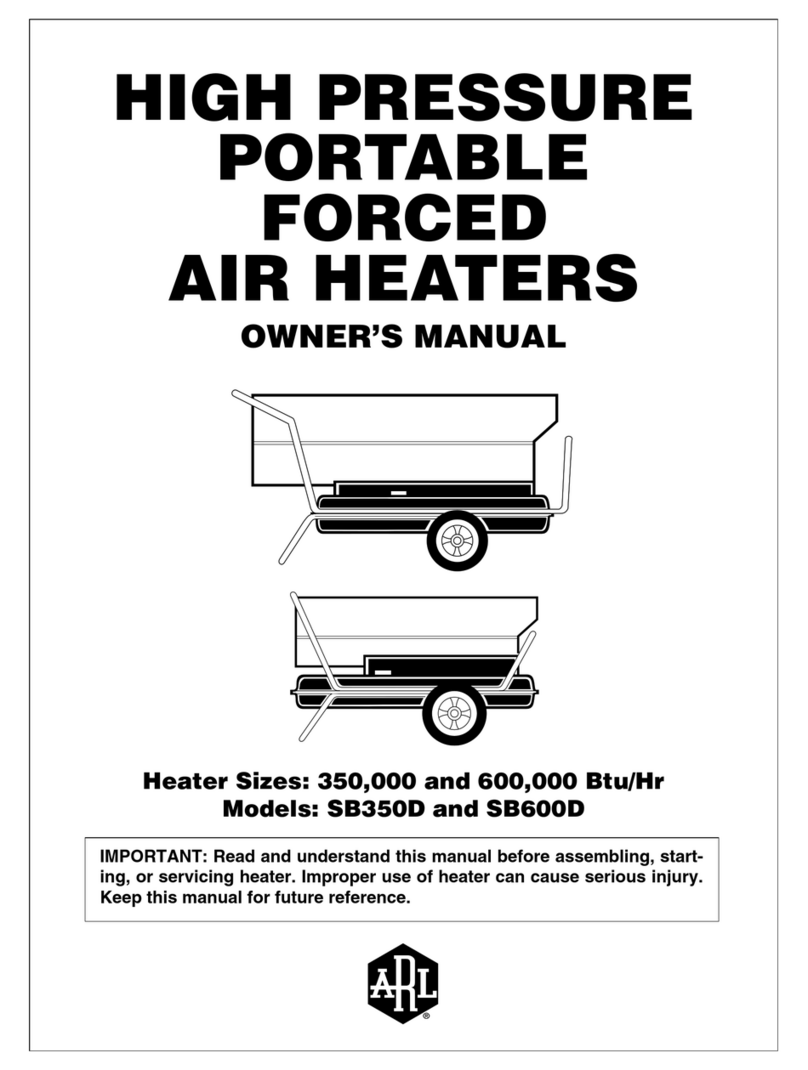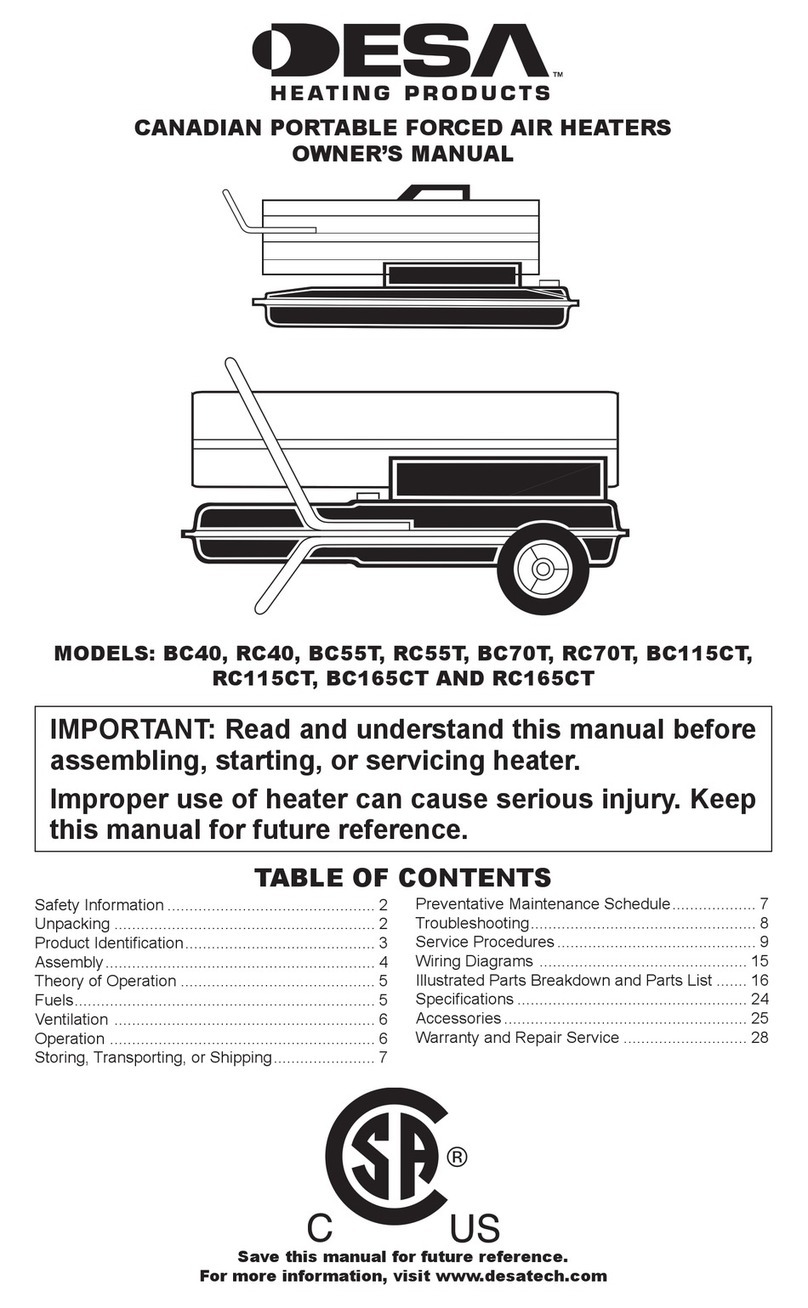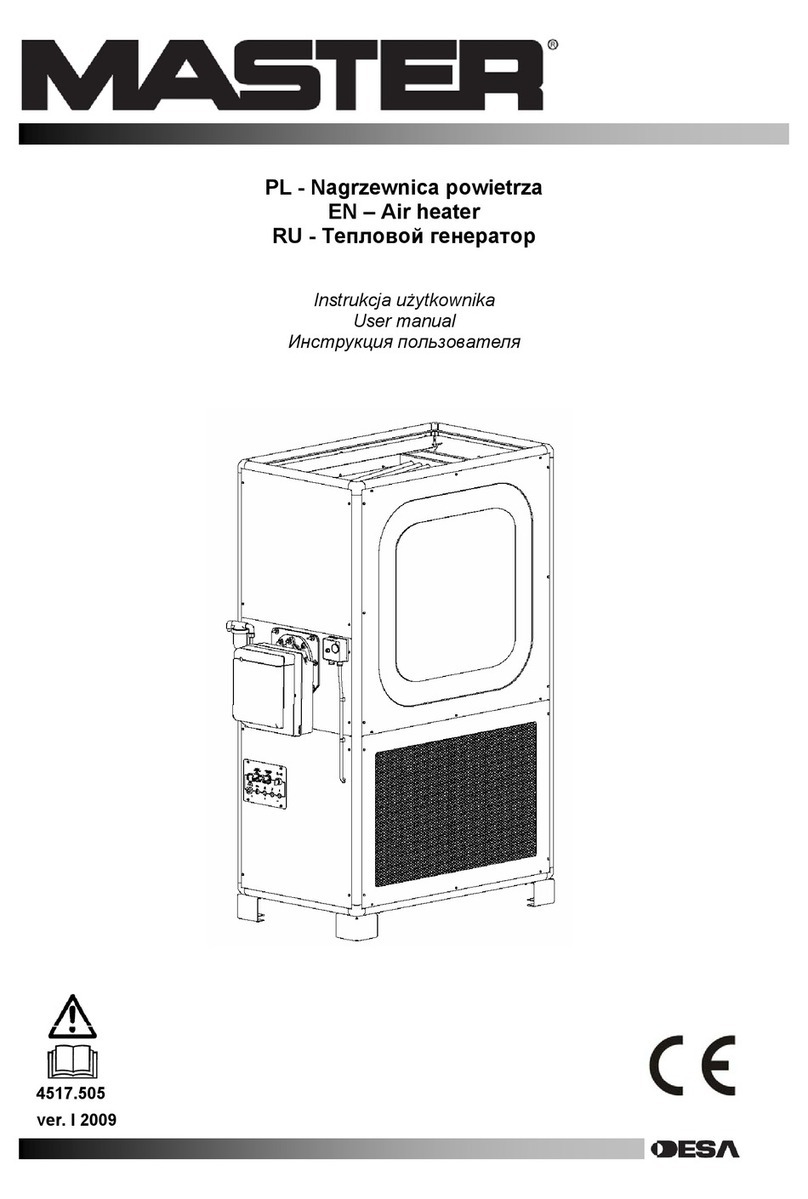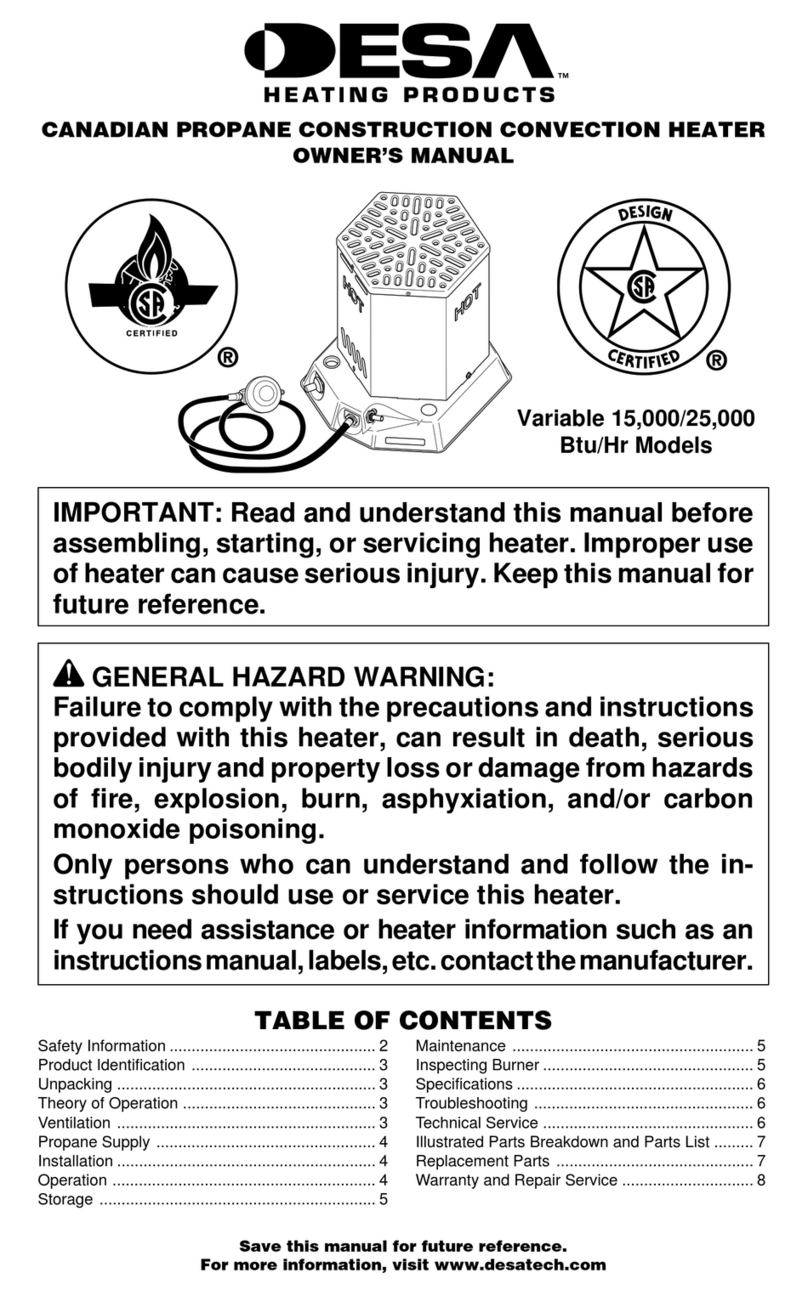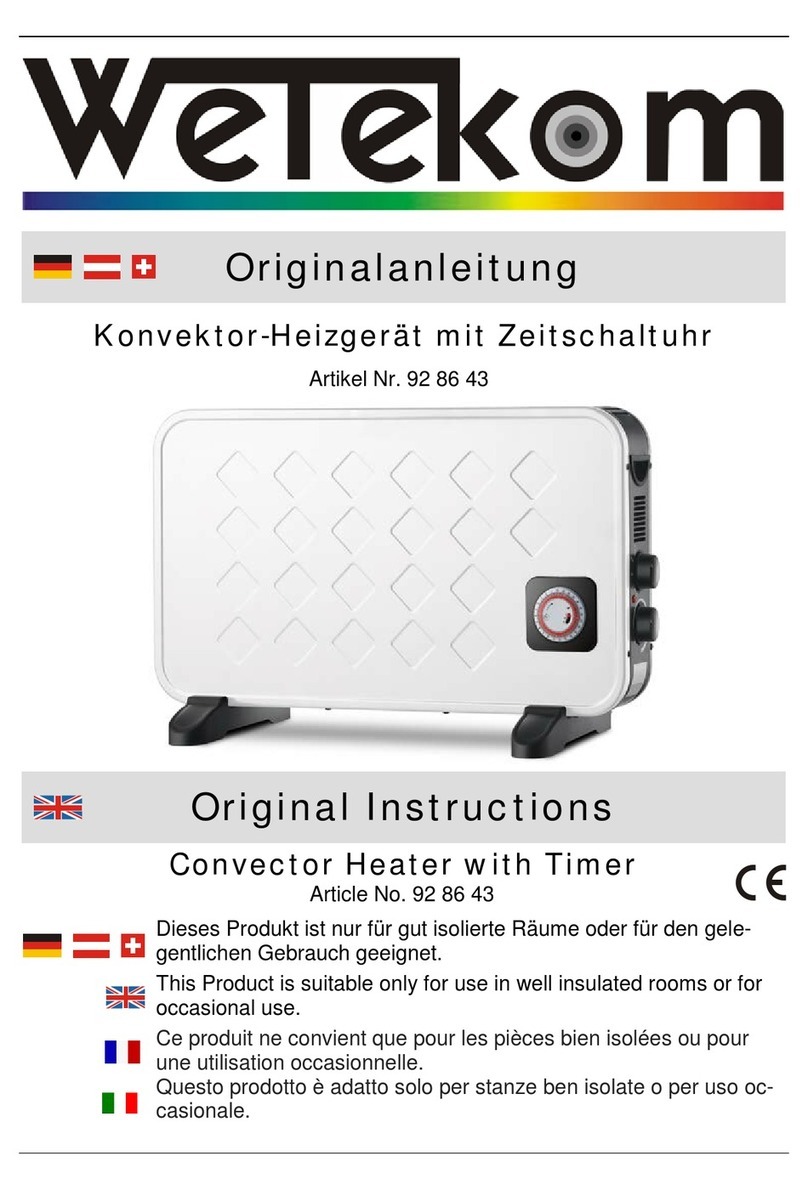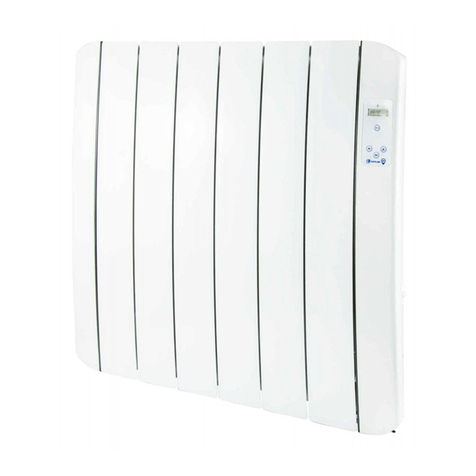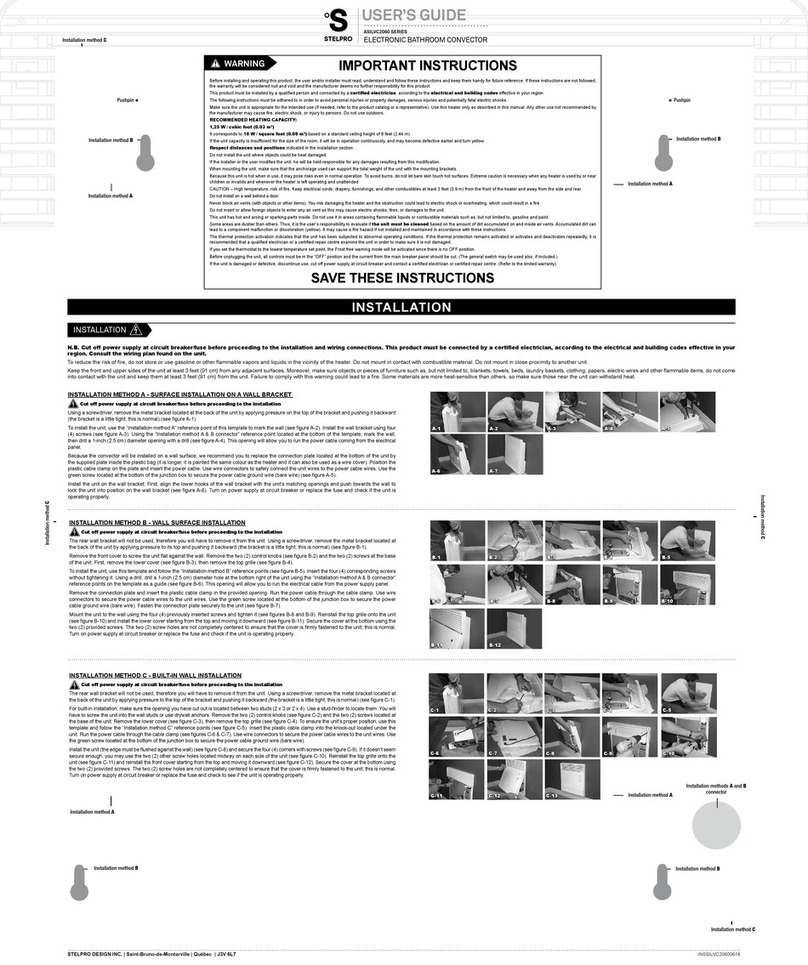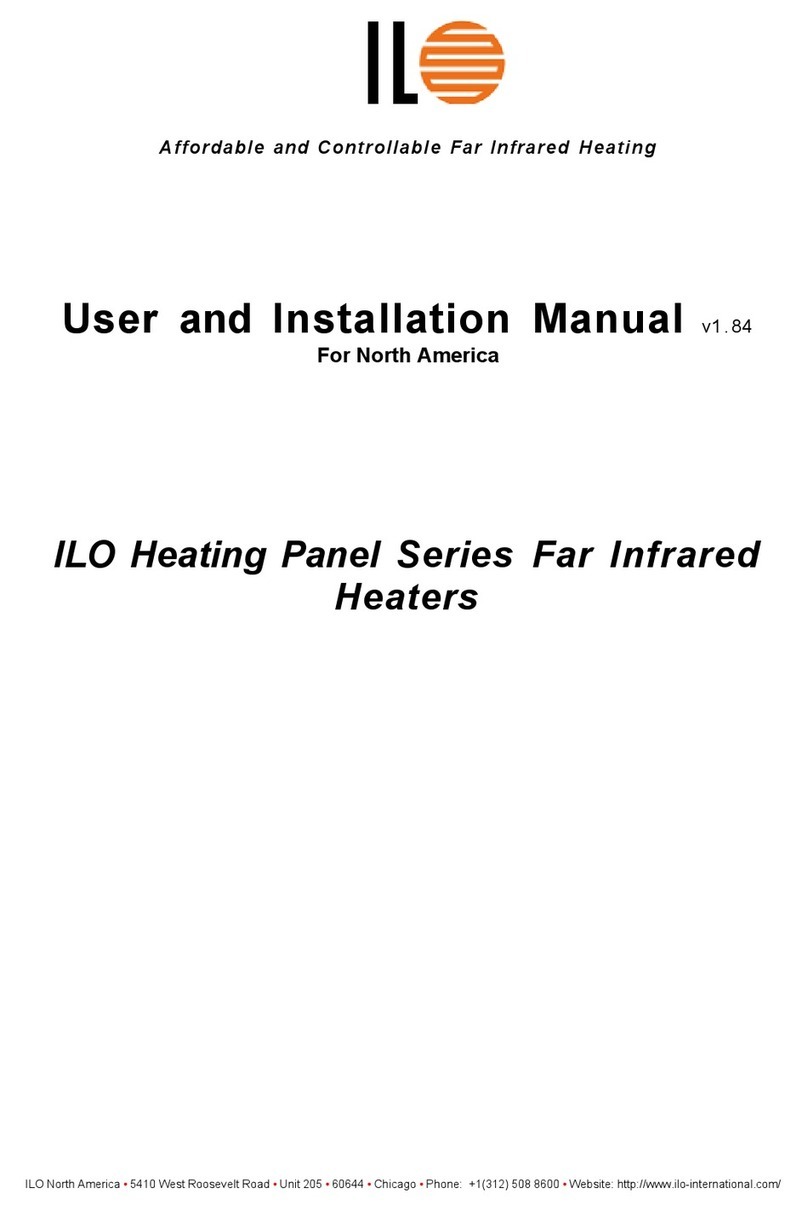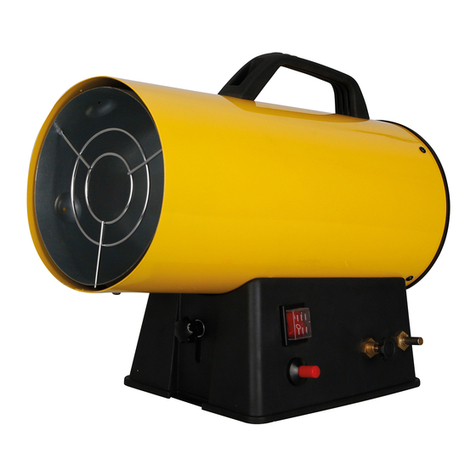
2
104020
For more information, visit www.desatech.com
SAFETY
INFORMATION
Carbon Monoxide Poisoning: Early signs
ofcarbonmonoxidepoisoningresemblethe
flu, with headaches, dizziness, and/or nau-
sea. If you have these signs, the heater may
not be working properly. Get fresh air at
once! Have heater serviced. Some people
are more affected by carbon monoxide than
others.Theseincludepregnantwomen,per-
sons with heart or lung disease or anemia,
those under the influence of alcohol, and
those at high altitudes.
Make certain you read and understand all
warnings.Keepthismanualforreference.It
isyourguidetosafeandproperoperationof
this heater.
• Use only kerosene or No. 1 fuel oil to
avoid risk of fire or explosion. Never use
gasoline, naphtha, paint thinners, alco-
hol, or other highly flammable fuels.
• Fueling
a) Personnel involved with fueling shall
be qualified and thoroughly familiar
with the manufacturer’s instructions
and applicable federal, state, and lo-
cal regulations regarding the safe fu-
eling of heating units.
b) Only the type of fuel specified on the
heater’s data plate shall be used.
c) Allflame,includingthepilotlight,ifany,
shall be extinguished and the heater al-
lowed to cool, prior to fueling.
d) During fueling, all fuel lines and fuel-
lineconnections shall be inspected for
leaks.Anyleaks shall berepaired prior
to returning the heater to service.
e) At no time shall more than one day’s
supply of heater fuel be stored inside
abuildinginthevicinityofthe heater.
Bulk fuel storage shall be outside the
structure.
f) All fuel storage shall be located a
minimum of 25 feet from heaters,
torches, welding equipment, and
similarsources of ignition (exception:
the fuel reservoir integral with the
heater unit).
g) Whenever possible, fuel storage shall
be confined to areas where floor pen-
etrations do not permit fuel to drip
onto or be ignited by a fire at lower
elevation.
h) Fuel storage shall be in accordance
withthefederal,state, or local author-
ity having jurisdiction.
• Never use heater where gasoline, paint
thinner,orother highly flammable vapors
are present.
• Follow all local ordinances and codes
when using heater.
• Heaters used in the vicinity of tarpaulins,
canvas, or similar enclosure materials
shallbe located a safe distance from such
materials. The recommended minimum
safe distance is 10 feet. It is further rec-
ommended that these enclosure materi-
als be of a fire retardant nature. These
enclosure materials shall be securely fas-
tened to prevent them from igniting or
from upsetting the heater due to wind
action.
• Use only in well-vented areas. Before
using heater, provide at least a three-
square-foot opening of fresh, outside air
for each 100,000 Btu/Hr of rating. This
heaterproducescarbon monoxide, which
is listed by the State of California as a
reproductive toxin under Proposition 65.
• Use only in places free of flammable va-
pors or high dust content.
• Use only the electrical voltage and fre-
quency specified on model plate.
• Use only a three-prong, grounded exten-
sion cord.
• Minimum heater clearances from com-
bustibles:
Outlet: 8 Ft. Sides: 4 Ft.
Top: 4 Ft. Rear: 4 Ft.
• Locate heater on a stable and level sur-
face if heater is hot or running or a fire
may occur.
• When moving or storing heater, keep
heater in a level position or fuel spillage
may occur.
• Keep children and animals away from
heater.
• Unplug heater when not in use.
• This heater is equipped with a thermo-
stat. Heater may start anytime.
• Never use heater in living or sleeping
areas.
• Never block air inlet (rear) or air outlet
(front) of heater.
• Never move, handle, refuel, or service a
hot, operating, or plugged-in heater.
• Never attach duct work to front or rear
of heater.
•Warning to New York City Residents
For Use Only At Construction Sites
inaccordance with applicableNYC codes
under NYCFD certificate of approval
#4803, #4899, #4908, #4909, or #4934.
WARNINGS
IMPORTANT: Read this owner’s
manual carefully and completely
before trying to assemble, oper-
ate, or service this heater. Im-
proper use of this heater can
causeseriousinjuryordeathfrom
burns, fire, explosion, electrical
shock, and carbon monoxide
poisoning.
DANGER: Carbon monoxide
poisoning may lead to death!
•SAFETY INFORMATION








